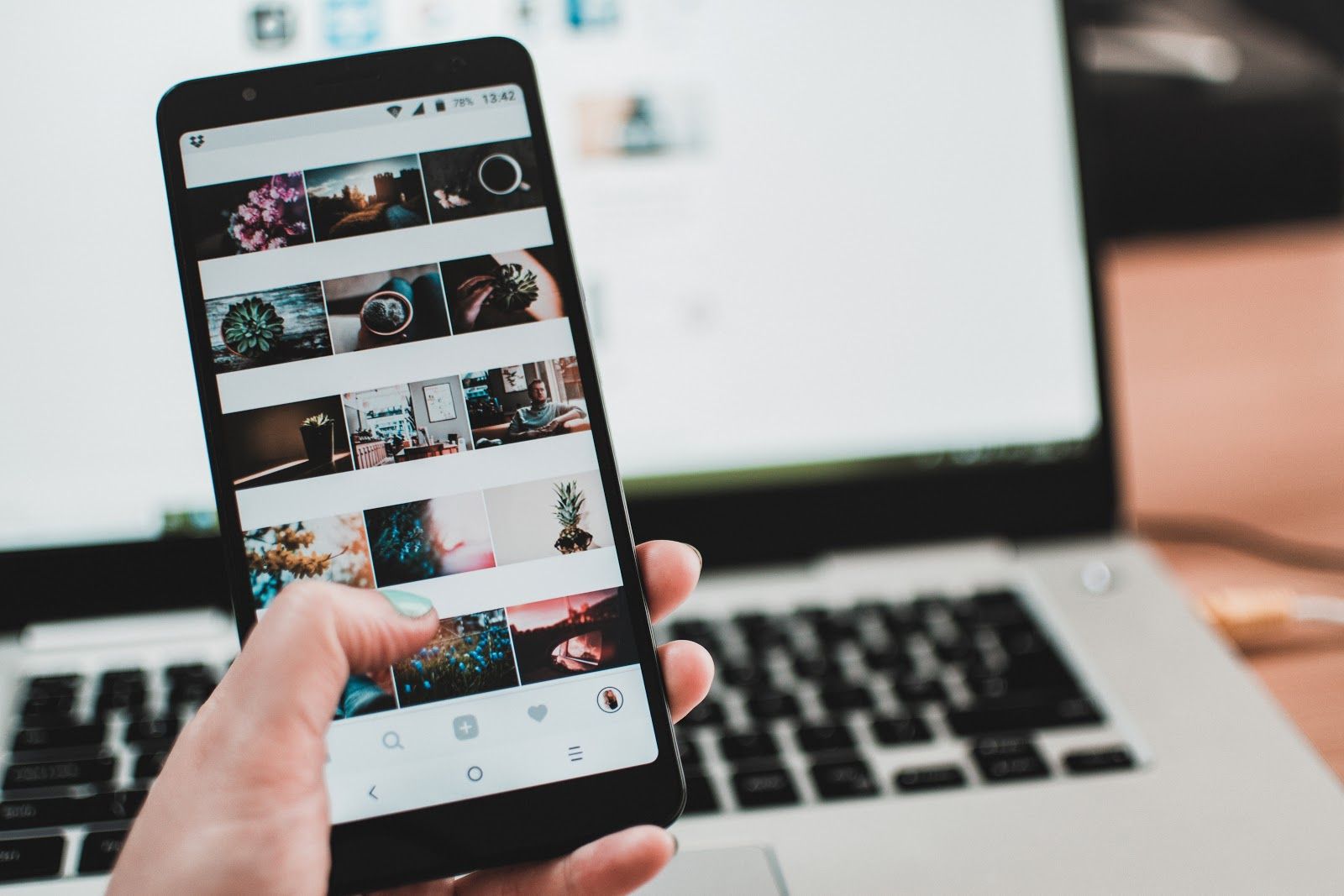Now, creating a website and being on social media go hand in hand, but do you know this? 💡
Your social networks can be a true acquisition lever, and you can use them to do SMO.
So…
What is SMO?
Social Media Optimization (SMO) refers to all the actions implemented on social media to increase your website visibility. It complements SEO that focuses on visibility in search engines.
On social media like Facebook, Twitter, LinkedIn or Google Plus, you can publish content and many links to your website.

Advantages of optimized SMO
Optimized SMO offers many advantages to your website and boost your SEO and performances.
But, in concrete terms, what SMO is for?
Social media build a privileged link between a company and its audience. It enables you to interact with your community directly and improve your brand image, as well as your credibility and expertise in your sector.
By introducing yourself on social media, billions of users (yes it is, billions) see you each day. There is much dense traffic which is full of potential partners or future customers who are waiting to know you.
It’s the first function of SMO: get traffic to your website. Thanks to a good communication strategy, you have more visitors to your website. You also enjoy a qualified and target traffic which is ready to become a potential customer, a customer, a loyal visitor and then a loyal customer for your business.
Social media enable instantaneous words, rightly or wrongly. For your business, these direct and spontaneous feedbacks are essential to understand concretely users’ expectations and adapt your contents or products.
Remember that 80 % of what it’s said about a brand on social media doesn’t come from the brand itself.
If you are on social media, you can control your digital reputation and communication.
Now you know the importance of SMO for your strategy implemented to get traffic and catch potential customers.
Let’s put theory into practice to optimize your SMO at best.
10 steps to optimize your SMO
Unfortunately, SMO doesn’t consist of creating and publishing on social media only.
On the contrary, social media optimization considers many settings, from the knowledge of the concerned social media to the animation of its community.
To get things clearer, let’s analyse the 10 requirements of SMO. 🔑

An effective SMO is based on a good understanding of social media.
To that end, you must know how social media and its algorithms work.
Twitter and Pinterest communities are different.
For example, on Twitter, most users are in the 18-24 age group and younger. There is no a big difference in the gender ratio. Moreover, the Twitter community is well-known to be open and react to publications regularly.
On the contrary, on Pinterest for example, users are older and most of them are women. The Pinterest community, also known as “Pinners”, is smaller than the Twitter community, but it’s quick-to-react with 2 million users each day.
The company’s behaviour is different, depending on the social media used.
For example, on Twitter, users generally like when companies answer them actively and joke.
On Pinterest, interaction goes through visual elements. “Pinners” like beautiful pictures, short videos, and kindly tone.
Each social media has specific hours and days when users are more active.
For instance, internet users visit Facebook at the end of the week, between 1 P.M. and 4 P.M. However, on Instagram, according to a CoSchedule study, you should publish in the morning or at 5 P.M, on Monday or Thursday.
#2 Choose the appropriate social networks
Then, it’s important to choose strategically the social media on which you’ll focus. For example, a BtoB business will opt for professional social media like LinkedIn.
If your company is in the audiovisual sector, use a social media like Instagram.
For a more professional and target community, choose Facebook.
Moreover, choose several social media, not a single one. You can be on LinkedIn and Facebook, or on Twitter and Instagram, or on all of them at the same time.
The secret is to know your objectives on each social media and the future actions implemented.
For example, you can just use Facebook to convey your blog articles, and Twitter to interact with your community even more.

#3 Connect your social networks with your website
For a real effectiveness and a good SMO, you must create links between your social media and website.
To that end, define internal linking that enables your visitors to go from a social media to your website, or from a social network to another.
Therefore, remember to add buttons to your social media, while writing your website URL in the biographies of each social media. Complete your profile, especially the “About” tab of Facebook, descriptions on Twitter, Google + or Instagram.
It’s also possible to encourage regularly your website visitors to follow you on social media by adding these buttons to the end of your contents.
On the contrary, you can also add links to your website to your publications or ephemeral posts.
💡 To that end, SiteW puts at your disposal a Social block to add easily a button to Facebook or other social media, directly to your website.
#4 Create sharable content
You need regular stream between your social media and your website and vice versa: it’s the key of SMO and its relation with SEO.
To that end, create content internet users can easily share on social media. Thus, you get backlinks highly visible. Moreover, if an internet user shares your content on their account, they tell their followers your content is informative, quality, and reliable.
Thus, you enjoy a curious and interested traffic that followed the recommendations of a user who is already here in their subscriptions.
To create sharable content, you can:
-
Use graphics and infographics to convey on Pinterest or Instagram.
-
Add a “Click To Tweet” feature that publishes a piece of content, directly on the Twitter account of the person who clicks.
To optimize your files (videos, images), remember to add text, a title, and a description by using keywords to enable internet users to share them.
#5 Be active to maintain your community
Then, you’ll be able to strengthen your relationship of trust with your community on social media while being active and making the exchanges with your followers dynamic.
Users really like it as a relationship of proximity is immediately created. Many users mention or contact a brand directly on social media to have a quicker and more human discussion as by email.
You can also repost users’ comments, images, or feedbacks, especially on Instagram or Twitter. Thus, you improve the interactions between you and your community, and you involve them concretely in your business life.
Moreover, by targeting your audience, you can detect the influencers to interact with.

#6 Create different and adapted content
Social media have a big advantage. They offer different formats and ways to convey your message.
Instagram is well-known for its square format. Facebook has a “cover picture” format. Twitter has a poor number of characters that requires to get to the point.
So, don’t hesitate to enhance your contents: for example, you can add infographics to your articles. Instagram, Pinterest, or Twitter like these infographics.
For the technical aspect, you’ll be able to give a title and add an ALT description to your file and publish it on different media.
#7 Involve your audience
For an effective social media optimization, you must interact with your community.
To do so, the best method is to involve them in your contents and decision takings.
This presents two advantages:
To that end, you can easily create surveys on each social network. They can be in the form of ephemeral publications on Instagram, multiple-choice surveys on Twitter or Facebook…
To go further, you can also offer them the possibility to send you ideas or give their opinion in private or public to involve them.
Thus, you include your community in your content, in form and content.
Moreover, for an optimized social media optimization, you can reward your community.
In the context of your brand or business, you can suggest contests or special offers.
You’ll make two profits:
People who already know you will participate in your contest, and the others who just saw the relayed contest will probably visit your website. Don’t forget to add your keywords, especially keywords related to your localization.
#9 Make constant monitoring
Such as in each internet field, social media are quickly developing.
Former common practices on a social media platform have become totally obsolete.
Moreover, mistakes and bad practices can considerably damage your online reputation, whatever your notoriety or number of followers.
So, you must continuously get information about the most appreciated and detested practices for each social media you use. To that end, you should be a regular user of the platform.
#10 Check your statistics
If there are general data on each social media to optimize your publications, the best way to get a good engagement rate is to depend on your statistics.

Likes, sharing (or retweets), comments, and +1 influence your SEO in the medium/long term, and indirectly on the acquisition of your website traffic. They are quantifiable signs that mean internet users liked your contents.
Therefore, take the time to analyse your results to understand why a publication works contrary to another one. The reasons can be different:
-
A few or unreadable visual elements on a publication.
-
Poor schedule, depending on your target audience.
-
No emojis or depth that enhance your publications…
You can also add an RSS feed to your website to visit and share your publications more easily.
💡 SiteW enables you to add an RSS feed thanks to the Widget/HTML block.
As you already know, an effective social media optimization gathers many actions to implement over the long term. Thus, you take advantage of social media to enjoy much traffic on your website, and improve your SEO.
However, you can make a mistake that can be difficult to forgive on social media. Here are mistakes not to make and the traps into which you mustn’t fall.

SMO bad practices
Publishing irregularly
Managing both your social media and your website may be time-consuming. They’re almost two full-time jobs.
However, regularity is essential on the internet. You must regularly publish on your website and your social networks to boost both SEO and SMO.
Let’s discover the second mistake…
Ignoring SEO for SMO
A good management of your website and social media may take time. You could, without realizing it, be neglecting your SEO in favour of your SMO or vice versa.
However, effective SMO goes hand in hand with effective SEO. SEO has a technical aspect, contrary to SMO which has a marketing aspect, but both are compatible.
The natural SEO of your website is the basis of an effective social media optimization. There are many good practices and methods to optimize your website for search engines and improve your SEO, such as:
-
Paying attention to your website structure to enjoy a well-structured and logical website.
-
Using enough keywords and choosing the appropriate ones to add them to your contents or descriptions of your websites, pages, and images.
-
Working on your texts, titles, headers, and backlinks.
-
Updating your content regularly.
Not customizing your account
Social media offer a bland structure of your account, which is identical for everybody.
So, how to stand out from the crowd?
Remember to create visual elements for your profile pictures, cover photos, background… To sum up, design visual elements for each customizable area of your social accounts.
Moreover, ensure your visual elements adapt to the different formats of the platform. Profile pictures are circular on each social media platform, and the format of cover photos can change (or missing, such as on Instagram).
Not respecting the tone
As we have already seen, each platform has a community with a specific tone. If you need to know users’ behaviours and habits, you must keep your business tone.
Expert users often notice these discordances regarding the tone, and they’ll let you know about them.
Hashtags (#) were fashionable, and then, they were ignored, and now?
Visible or invisible hashtags are still essential to enable social media algorithms to understand perfectly your publication content.
Moreover, on different social media, it’s possible to subscribe directly to specific hashtags to see content published by different accounts about the same topic.
With hashtags, you’re more visible to a community who is interested in the topic you deal with, but still doesn’t know your brand.
Made it! You know more about social media optimization. You know why it’s important and how to improve it to enjoy:
-
better SEO
-
more traffic
-
more visibility
See you soon on social media! 🚀





